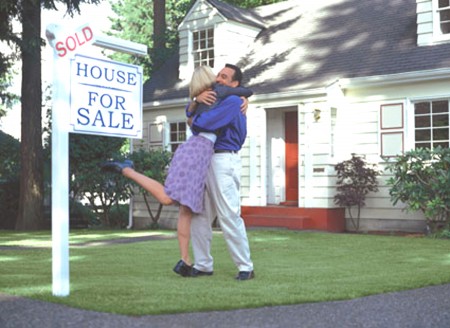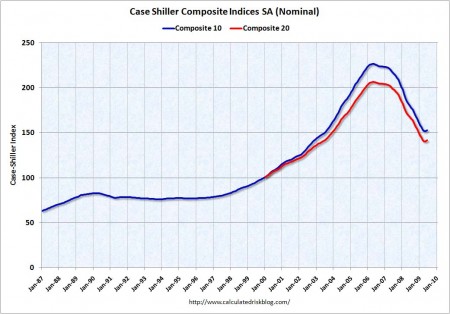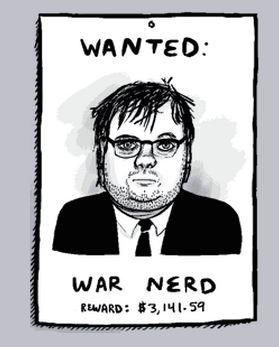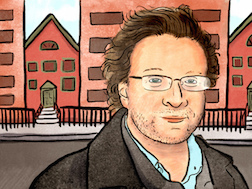
Once again, the Case/Schiller Index has lived up to its name. All summer long, real estate shills have used it to jack up homebuyer confidence and fluff the housing market. Now, they are doing it again. Just look at the bullshit headlines coming out today:
U.S. Economy: Home Prices Increase by Most Since 2005 . . . US home prices up for third month . . . Index shows home prices rose for 3rd month in July . . . Money Daily Brief: US home prices rise for third straight month . . . Home prices gain for 3rd straight month . . . Denver home prices rise again, getting closer to 2008 levels
Most of this unbridled optimism is based on the just released Standard & Poor’s/Case-Shiller’s U.S. National Home Price Index data for the month of July, which showed that home prices went up by 1.2% since June. A one-point-two-percent month-over-month increase? Ain’t that something!
Here’s CNN:
Home prices gain for 3rd straight month
Case-Shiller index shows 1.6% gain in July, a sign that recovery may be in motion.
By Les Christie, CNNMoney.com staff writer
Last Updated: September 29, 2009: 10:37 AM ET
NEW YORK (CNNMoney.com) — There was another tick-up in home prices in July, a further indication that housing markets may be stabilizing, according to a report issued Tuesday.
Prices for the S&P Case-Shiller Home Price index of 20 cities rose 1.6% from a month earlier, the third consecutive month of gains. They went up 1.4% in June.
And AP:
Index shows home prices rose for 3rd month in July
(AP) – 9 hours ago
NEW YORK — Home prices rose for the third month in a row in July, new data Tuesday showed, more proof a fragile housing recover is underway. . . . “We expected another gain but this is remarkable,” wrote Ian Shepherdson, chief U.S. Economist for High-Frequency Economics. He noted the index has risen at an 8 percent annualized rate in the three months to July, the best performance since early 2006 and the first increase on this basis since mid-2006.
The only thing that’s “remarkable” about any of this is the indefatigable army of real estate shills still drawing paychecks and preaching the gospel of rising home prices. In a typical news industry move, most of these articles have nothing but feel good messages coded into their headlines and ledes, only mentioning in an offhand way the fact that, well, home prices are still down 13.3% from 2008, and 33% since the peak of the housing bubble in 2006.
This gain of 1.2% ain’t much when you consider that 1) the Case/Schiller Index is NOT seasonally adjusted, 2) the increase in demand caused by all the government incentives doled out to new homeowners over the summer, 3) the huge shadow foreclosure inventory that is still restricting supply, and 4) the massive influx of government-backed subprime FHA loans, which made risky loans almost as easy to get as in 2006.
I’ve been writing about this months now. In fact, I covered this exact same Case/Schiller story a month ago, when newspapers exploded in wild-eyed boosterism because of a 1.4% month-over-month increase. And it probably needs repeating, so here’s a slightly abridged version in case you missed it:
BEHIND THE REAL ESTATE BULLSHIT: SOCIALISM & SCAMS DRIVE HOUSING MARKET OPTIMISM
By Yasha Levine
BANKING PORN / SEPTEMBER 3, 2009
If there’s one thing I’ve learned during the six months I’ve spent living in the subprime wreckage of Victorville, California, is that most of the news you read about the real estate market is a lie. Positive statistics are routinely taken out of context and misattributed, headlines are exaggerated, and negative trends are totally ignored or dressed up and buried deep down in the text. (There’s another interesting strategy I’ve seen used to exaggerate positive real estate market news: newspapers routinely separate good news from the bad. They are put in separate articles, with negative pieces using technical/business language, while the feel-good fluff is written simply enough for the average sucker to understand.) The newspaper industry’s shameless shilling for the real estate industry knows no political bias. Who knows, maybe it has something to do with all the money that changes hands between them. Like in 2006, when real estate ads stuffed newspaper coffers with $5 billion.
Unfortunately, I didn’t get a single cent worth of that. So let me tell you what really happened to the housing market this June:
Everyone is pointing to the S&P/Case-Shiller Home Price Index as a sign of recovery. The Case-Shiller index tracks the resale values of single-family homes in 20 cities, watching how they compare over time. The index has a two-month lag. So in late August, they released the stats for June. And what those numbers showed—well, I’ll let the numbers speak for themselves.
The reason everyone is so fucking ecstatic is because—now prepare yourself—instead of dropping an expected 16.4% from last year, home prices only fell by only 15.44%. Whoopee! Roll out the marching band and let’s plan a parade! But for some reason, almost no one bothers to mention this piece of mind-bending good news. Instead, they look at the “month over month” changes. And compared to home prices in May, the index for June actually went up 1.4%. One point four percent! That’s right, this is the tiny increase everyone is so giddy about.
But don’t go sinking your kid’s college savings into K&B Home stocks just yet, because, if you haven’t figured it out yet, the good news is not really good news at all. Looking at “month over month” changes to predict future real estate values is like trying to calculate the slope of a mountain with an electron microscope. At that kind of magnification, you can find convincing proof that the northern wall of the Great Canyon is as flat and smooth as the Great Plains.
Zoom out and it becomes pretty clear that the index’s trend line doesn’t leave much to be optimistic about.
See that little knob at end of that graph? That’s what passes for “pronounced” and “wide-ranging” in financial reporting circles these day. The fact is, the Case-Schiller Index is down 15.4% over the last year and 31.3% from the high in 2006.
The positive gains don’t look like much, especially when you find out that this minuscule hick-up was a direct result of shady manipulations of and government intervention in the real estate market. (Hell, the Case-Schiller Index isn’t even seasonally adjusted. Recession and market inflation aside, there is almost always an increase in home sales during summer months.)
Financial reporters sure do have short memories. It seems everyone has forgotten that 2009 will go down in history as the Summer of Real Estate Reinflation, which was fueled by legalized accounting fraud and a whole lot of taxpayer money.
In June, I wrote about how the federal government was helping banks reinflate home prices by allowing them to keep huge numbers of their foreclosed properties off the market, which created a “shadow” inventory that even now could supply America’s housing demand for the next two years:
To put it simply: banks are limiting supply in order to keep inflating the bubble. Keeping properties off the market makes sense for two reasons: it allows banks to engage in another round of brazen ripoffs by selling at least some of their properties at artificially high prices to a new wave of sucker investors (many of which are first-time home buyers). But more importantly, it allows the banks to avoid recording a loss on their balance sheets, making them look more profitable then they really are
That same month, doing a little snooping around in Victorville, I stumbled on a horrifying discovery: the Federal Housing Administration had officially taken over for the subprime mortgage industry and proceeded to pump newer, riskier home buyers into the debtor game in order to prop up home sales:
It is as deadly to our vampiric debtor economy as a stake through the heart: the FHA loan. By guaranteeing certain mortgages, the Federal Housing Administration has been helping middle- and low-income Americans purchase their first homes ever since the 1930s. But this modest leg-up program has been been hijacked and transformed into the new subprime-loan market operated by lenders who are as corrupt, predatory and shortsighted as the original subprime lenders, and maybe even more so. Because this time taxpayers have been put on the hook for the risk well in advance. Real-estate insiders have been sounding the alarm about this new shadow subprime mortgage market — which is now almost $600 billion strong — for months now. But instead of listening, Congress has been trying to expand the FHA loan program.
Right now, the FHA is in essence giving out no-money-down loans to anyone who doesn’t already own a house, regardless of credit history . . . Not surprisingly, it seems that risk-free loans are the only way banks can be persuaded to start lending again.
Now, two months later, the FHA has taken on so much risky subprime debt that even FHA officials are beginning to worry that the agency will run out of funds and will be forced to come to Congress asking for a massive taxpayer bailout. Just in the past year, the FHA has taken on $200 billion in new obligations, according to the Wall Street Journal. In 2008, outstanding FHA-backed loans totaled $429 billion. By the end of 2009, they’ll be somewhere around $630 billion. (The FHA took on $16.7 billion of new debt obligations every month, or $835 million every day of the work week.)
But it gets worse. According to USA Today, the FHA backed about 3% of mortgages in 2006. This year, its market share is going to hit 24%. To put it another way: in just a few years, the FHA has ramped up its subprime mortgage operation so recklessly that now taxpayers are responsible for almost 1 out of every 4 mortgages!
Not surprisingly, default rates on those loans have been rising, too. This month, it was reported that 7.8% of FHA loans are no good. Which means that, right now, you and I are going to have to fork over $50 billion to banks like Wells Fargo, JP Morgan Chase, Citi and countless other welfare-queen banks to cover the borrowers who defaulted on their FHA-backed loans.
Look at the little knob on that graph again. That’s what $16.7 billion taxpayer dollars a month gets you. And it’s also one of the main things driving the “improvements” in the housing market, according to USA Today:
FHA loans “are one of the most important sources in this market,” says Mark Zandi of Moody’s Economy.com. “Without FHA, the housing slide would be much more severe. We wouldn’t be talking about a recovery now. We’d still be talking about a crash.” [emphasis mine]
People might not be talking about a crash, but they are talking about a bailout, which is nothing less than government intervention to avert a crash. Like in this recent article from the Wall Street Journal:
The rising losses at the FHA, part of the U.S. Department of Housing and Urban Development, come as the agency has rapidly increased its role in guaranteeing loans in an attempt to stabilize the housing market.
It isn’t clear how the rising losses may affect home buyers. Options for the agency could include politically unpalatable choices, such as asking for taxpayer funds to boost reserves or increasing the premiums borrowers pay for the insurance offered by the agency. Agency officials say if there is a shortfall, they don’t have to do anything except report it to lawmakers. But some mortgage and housing analysts see trouble ahead. “They’re probably going to need a bailout at some point because they’re making loans in a riskier environment,” says Edward Pinto, a mortgage-industry consultant and former chief credit officer at Fannie Mae. “…I’ve never seen an entity successfully outrun a situation like this.” [emphasis mine]
So there you have it, folks. This is America’s New Capitalism at work.
Read more: boosterism, case/schiller, fha, housing market, real estate, Yasha Levine, Banking Porn, What You Should Hate


Got something to say to us? Then send us a letter.
Want us to stick around? Donate to The eXiled.
Twitter twerps can follow us at twitter.com/exiledonline
















3 Comments
Add your own1. DarthFurious | September 30th, 2009 at 5:45 am
Real estate in this country has been a scam since the Louisiana purchase.
2. jimmy james | September 30th, 2009 at 4:01 pm
Why the shit would you want a seasonally adjusted house price index?
3. sluggish | September 30th, 2009 at 9:31 pm
amen to this.
Leave a Comment
(Open to all. Comments can and will be censored at whim and without warning.)
Subscribe to the comments via RSS Feed